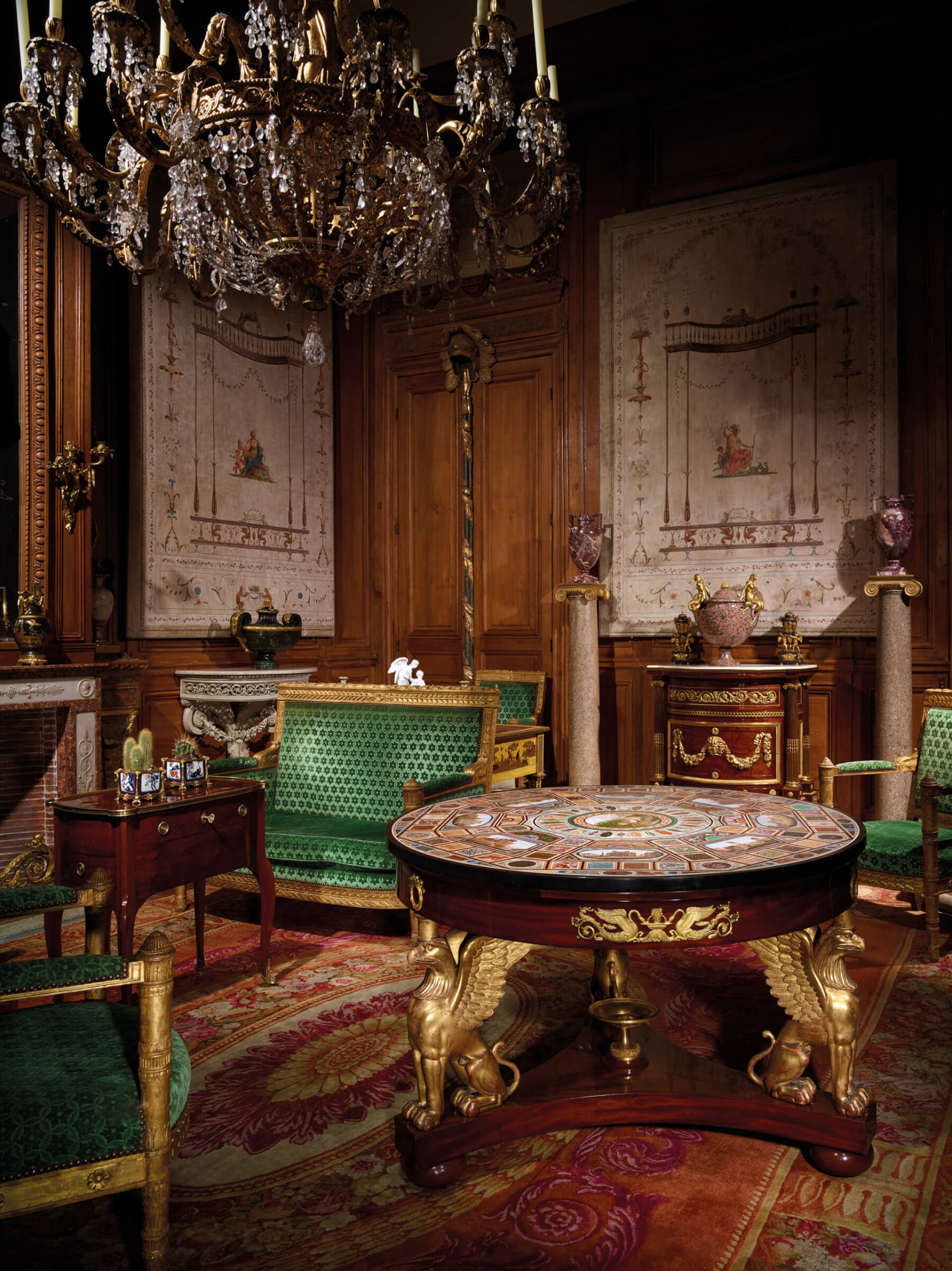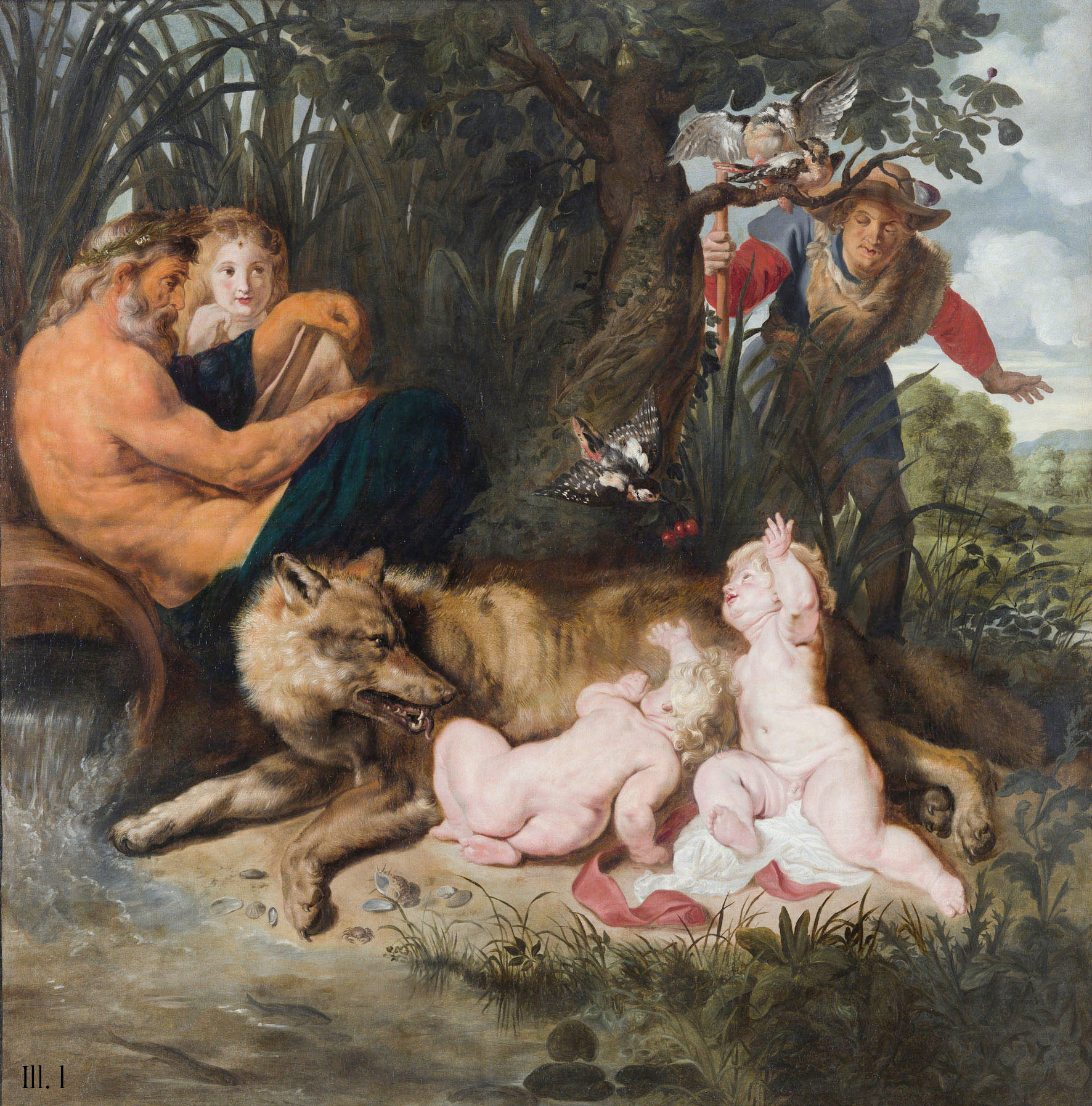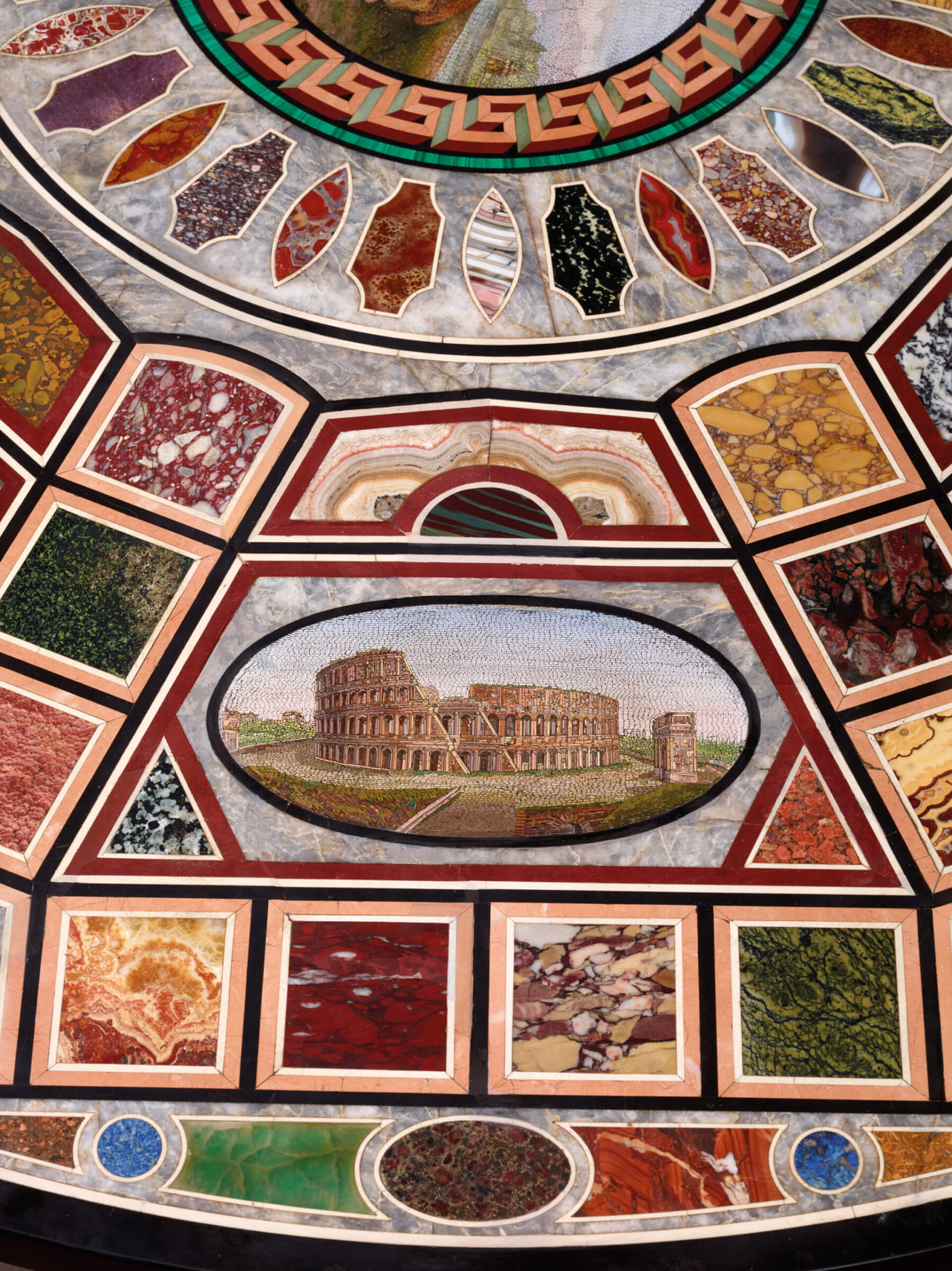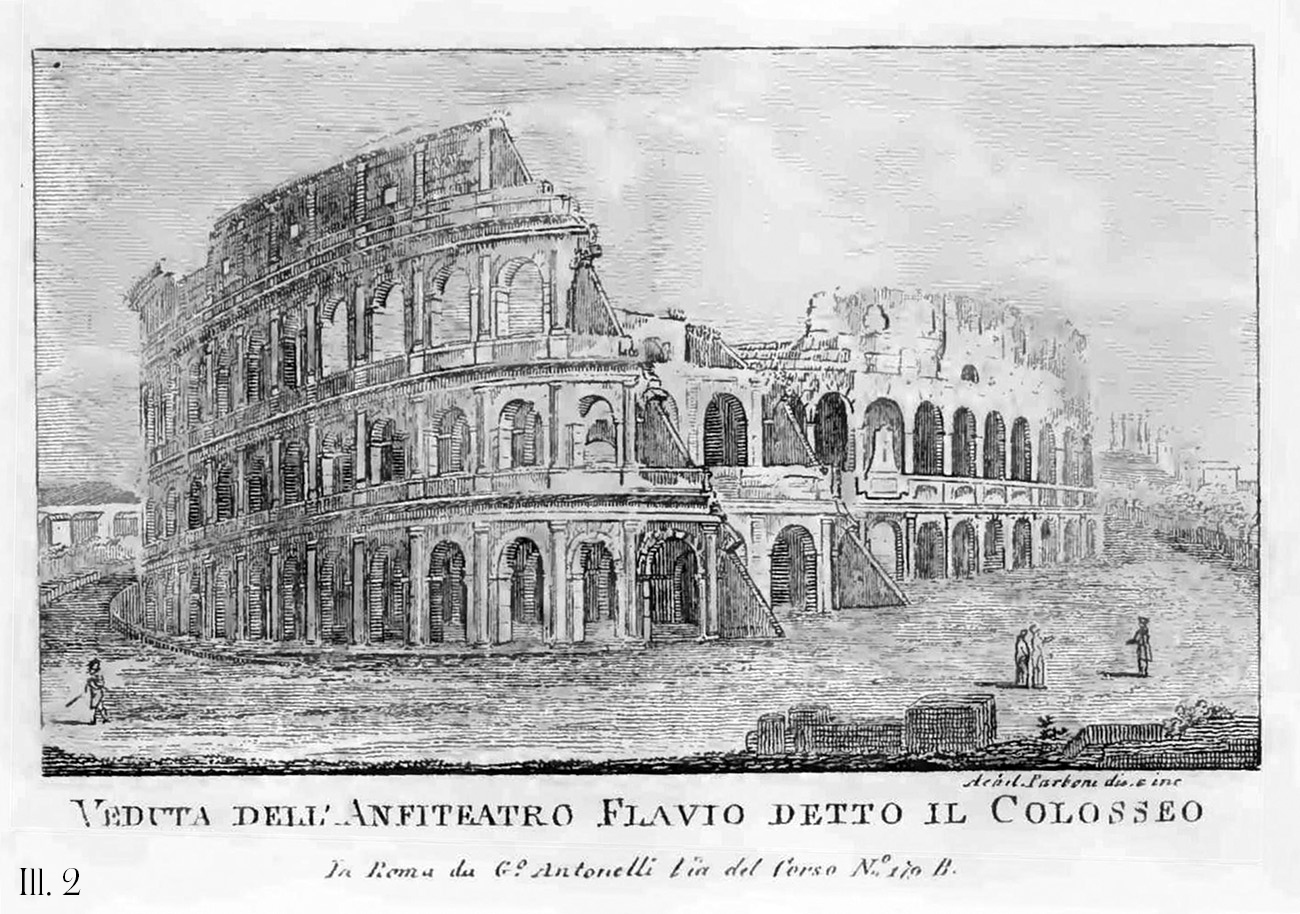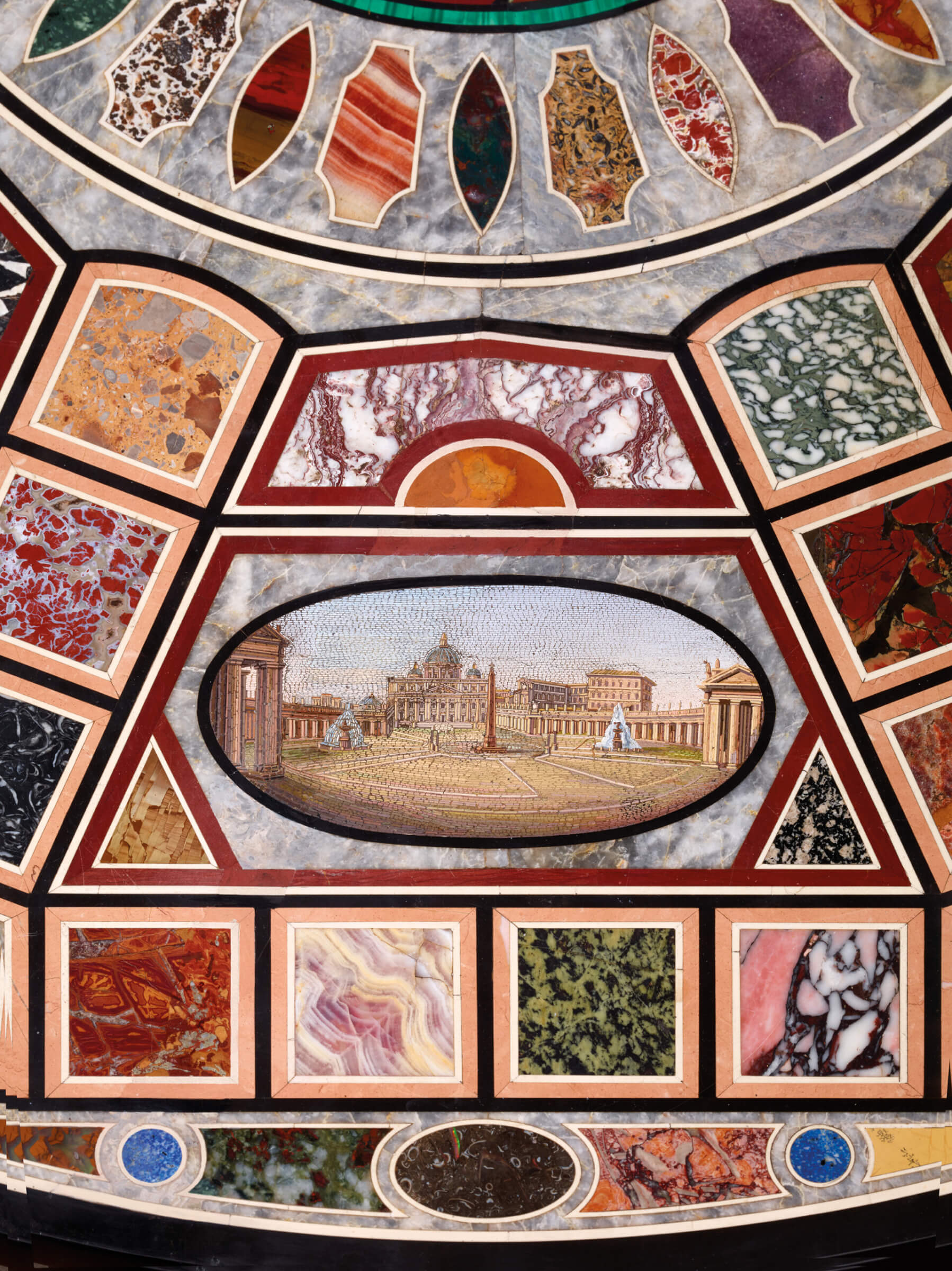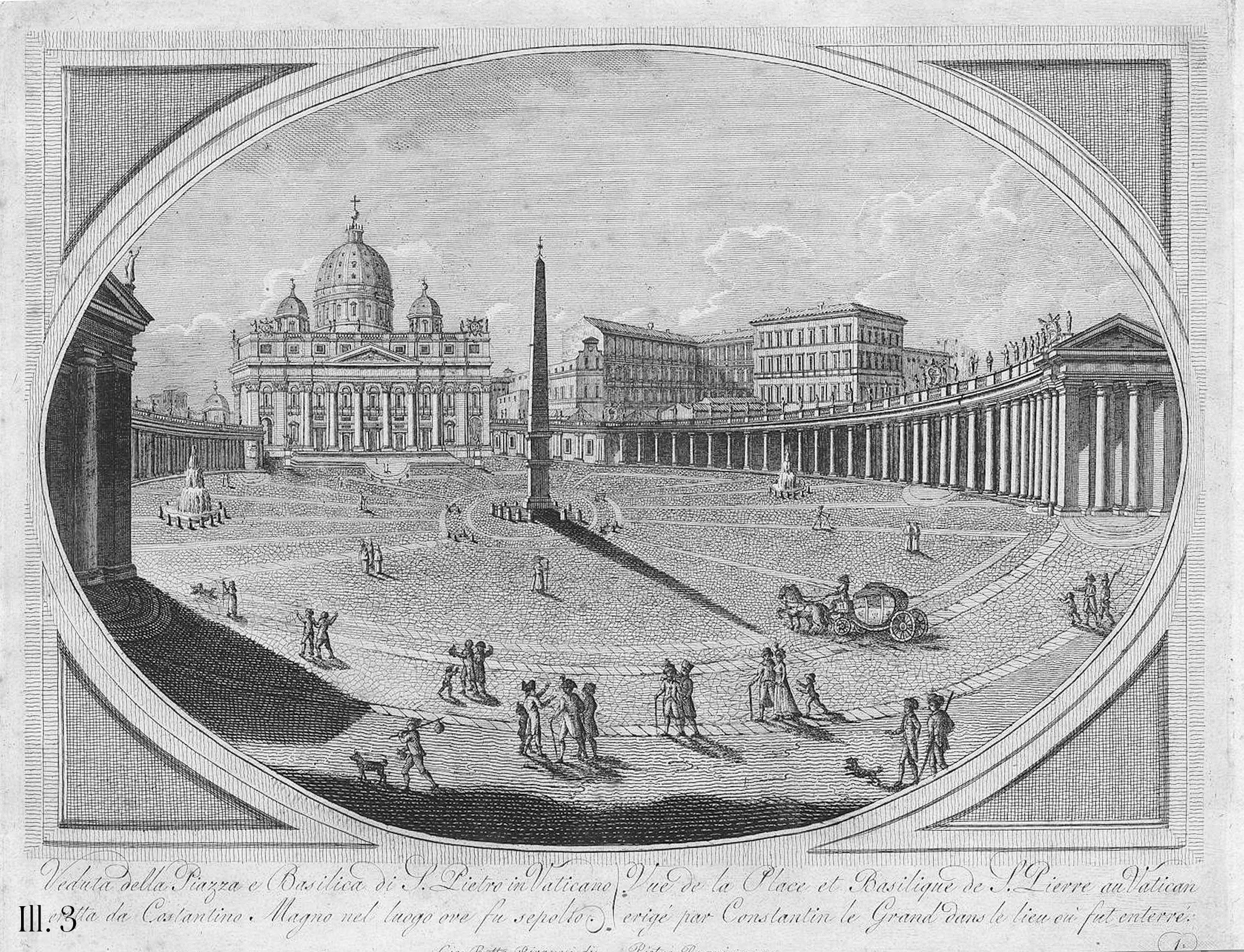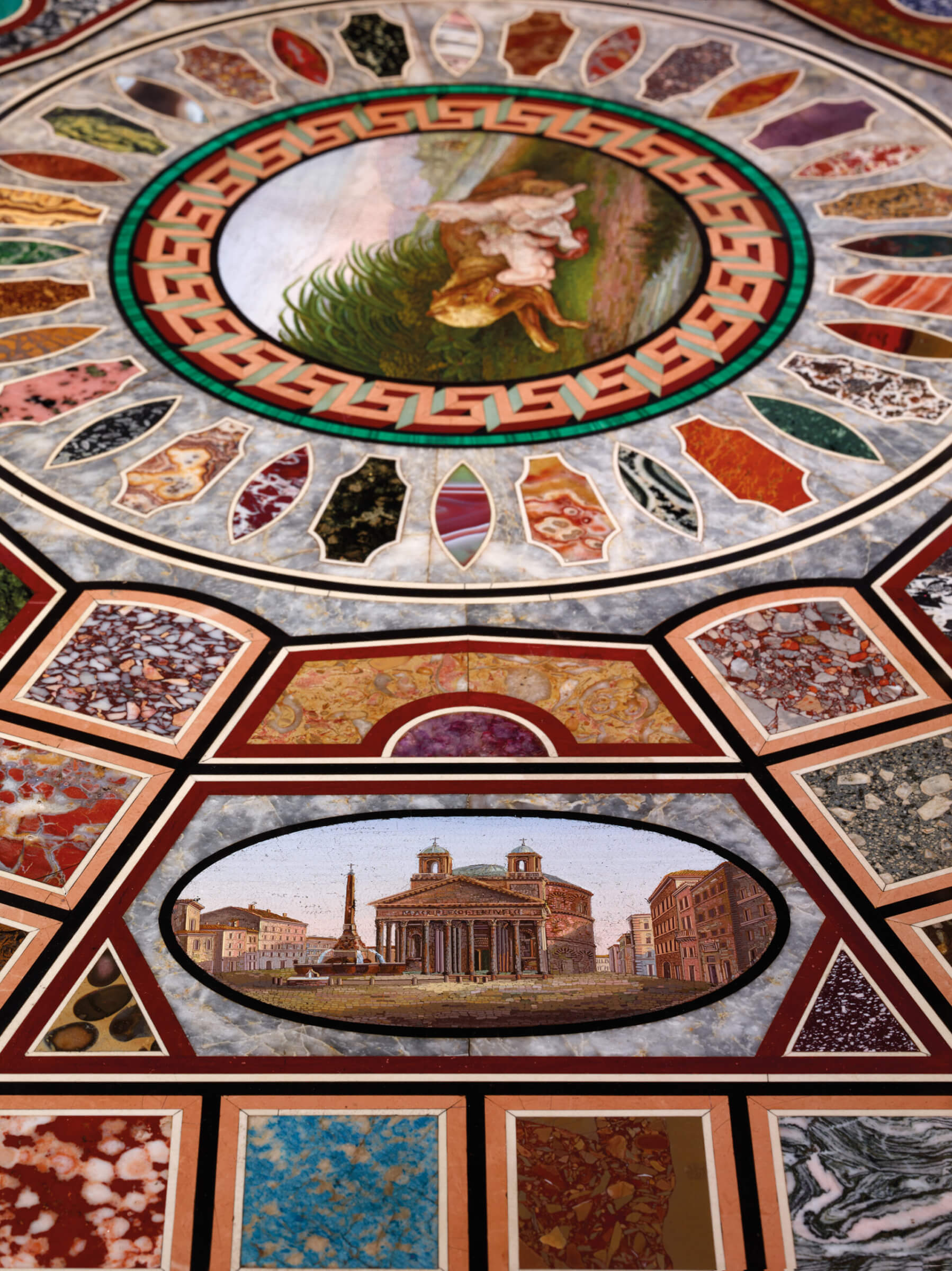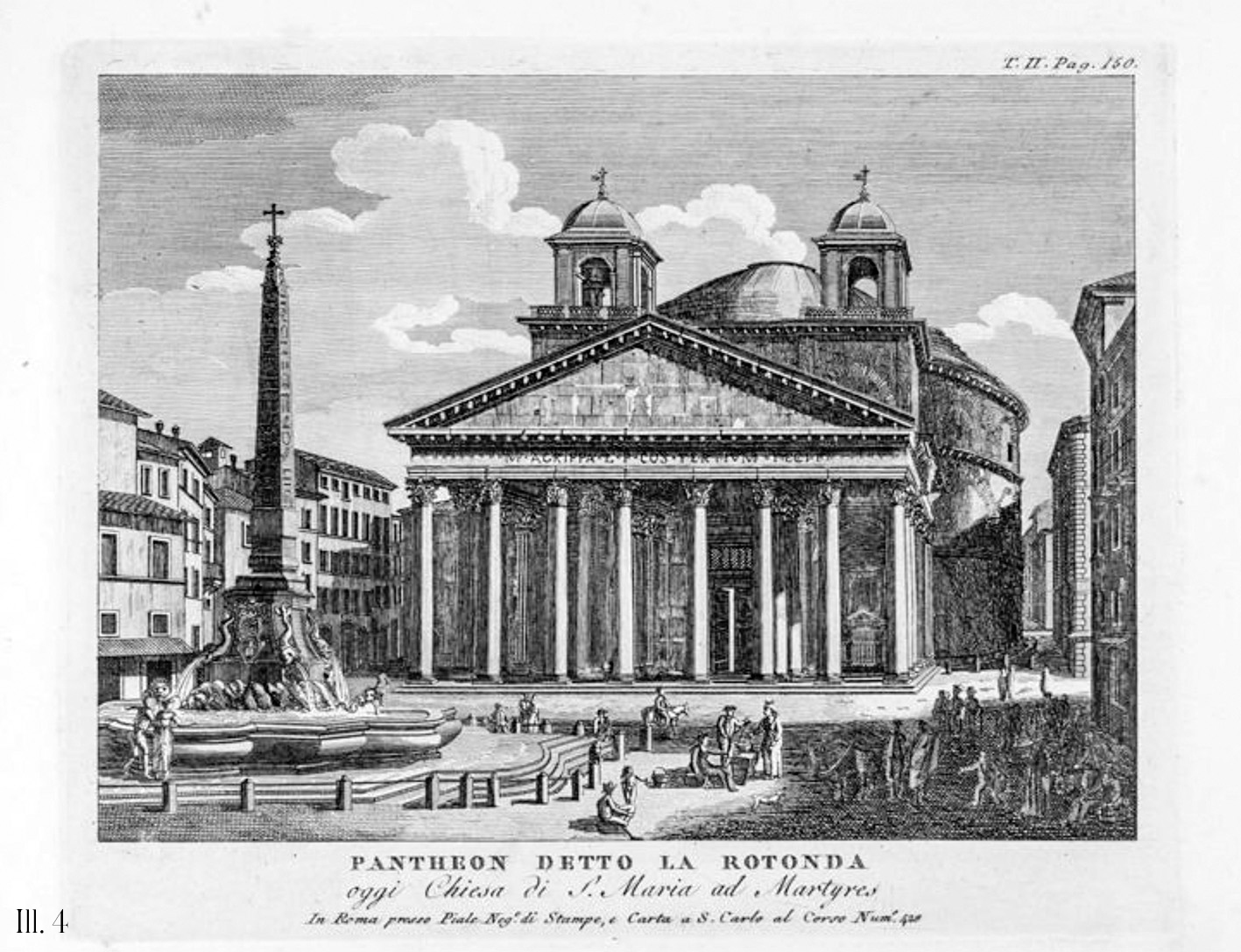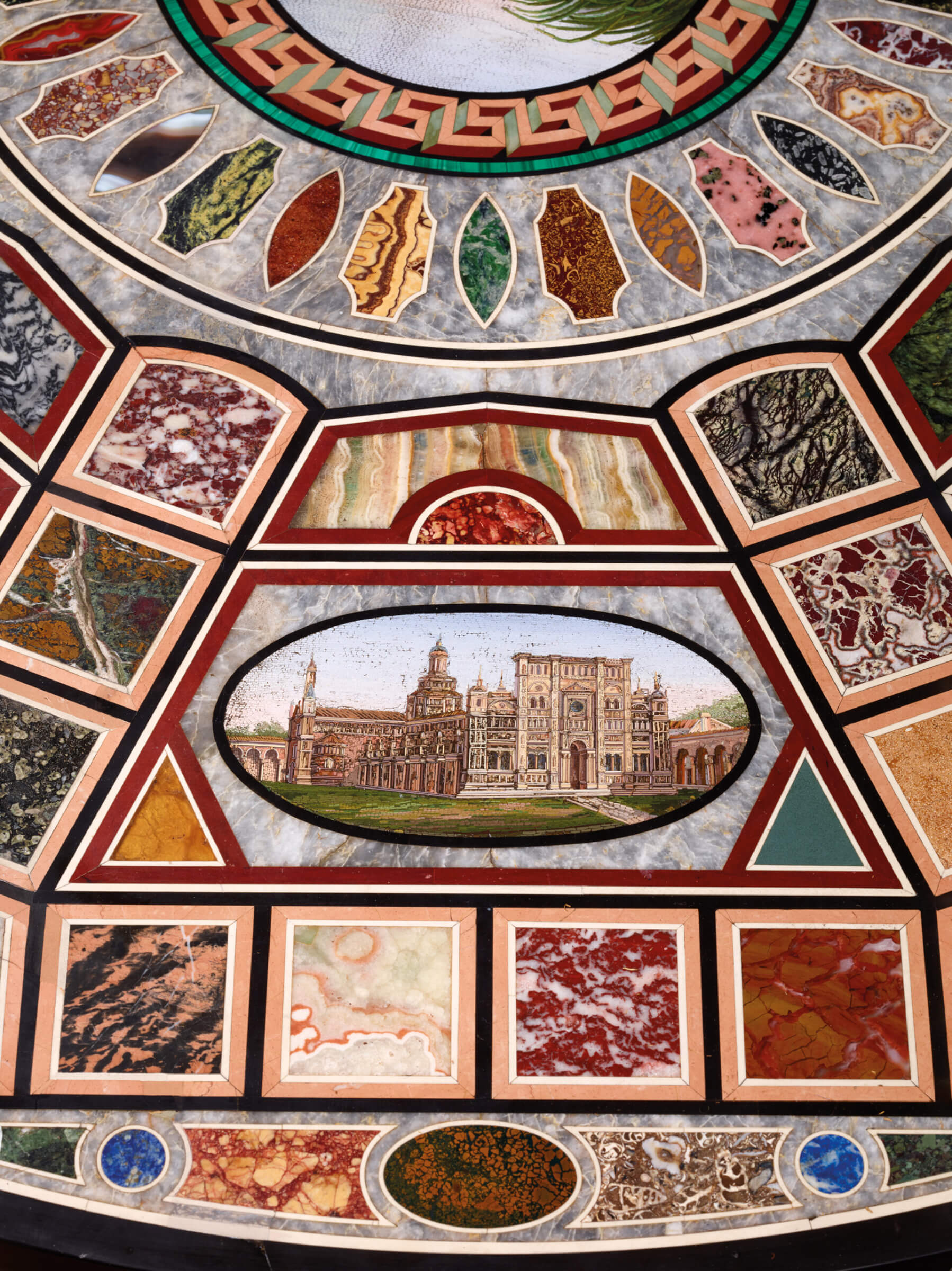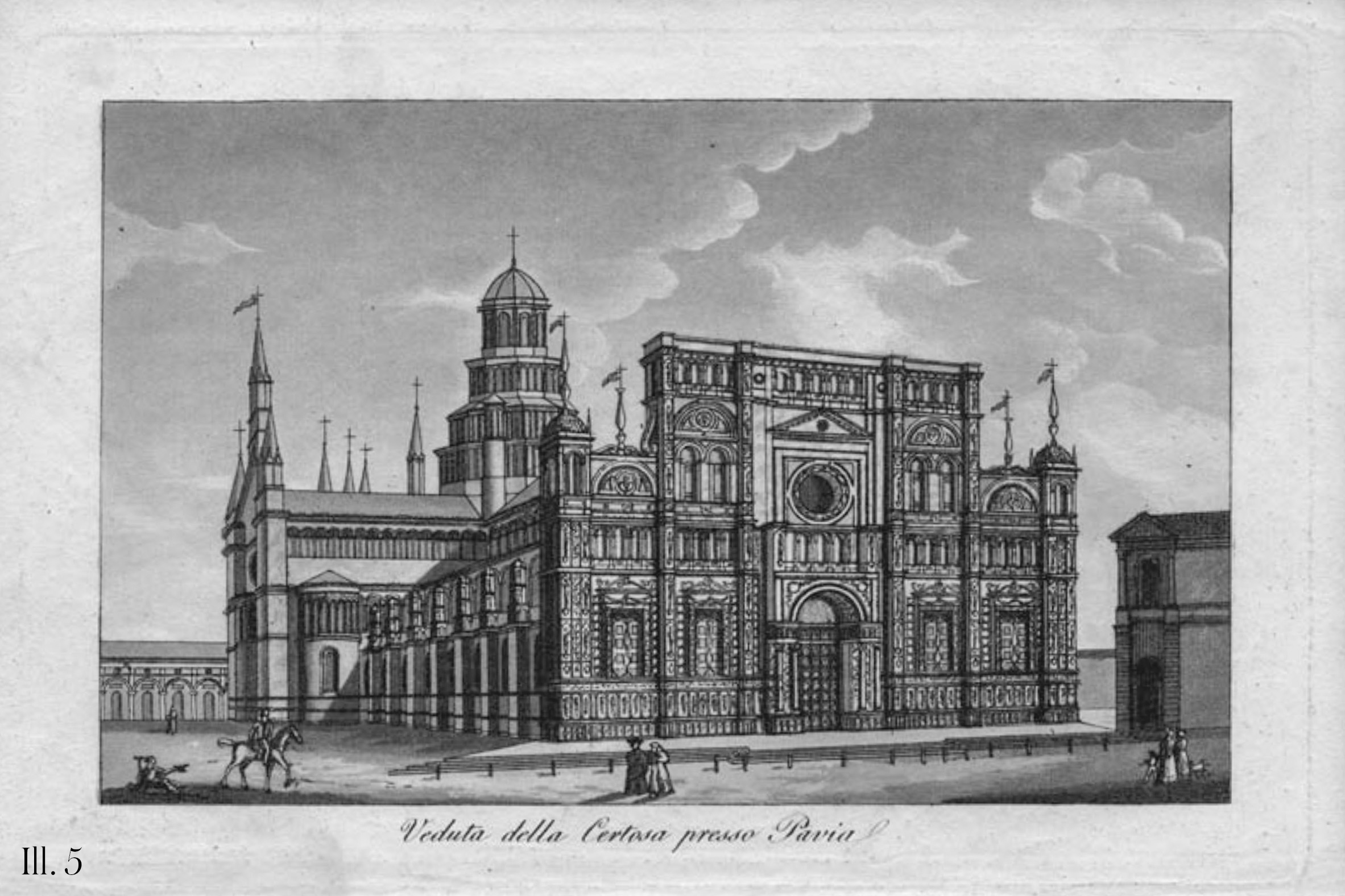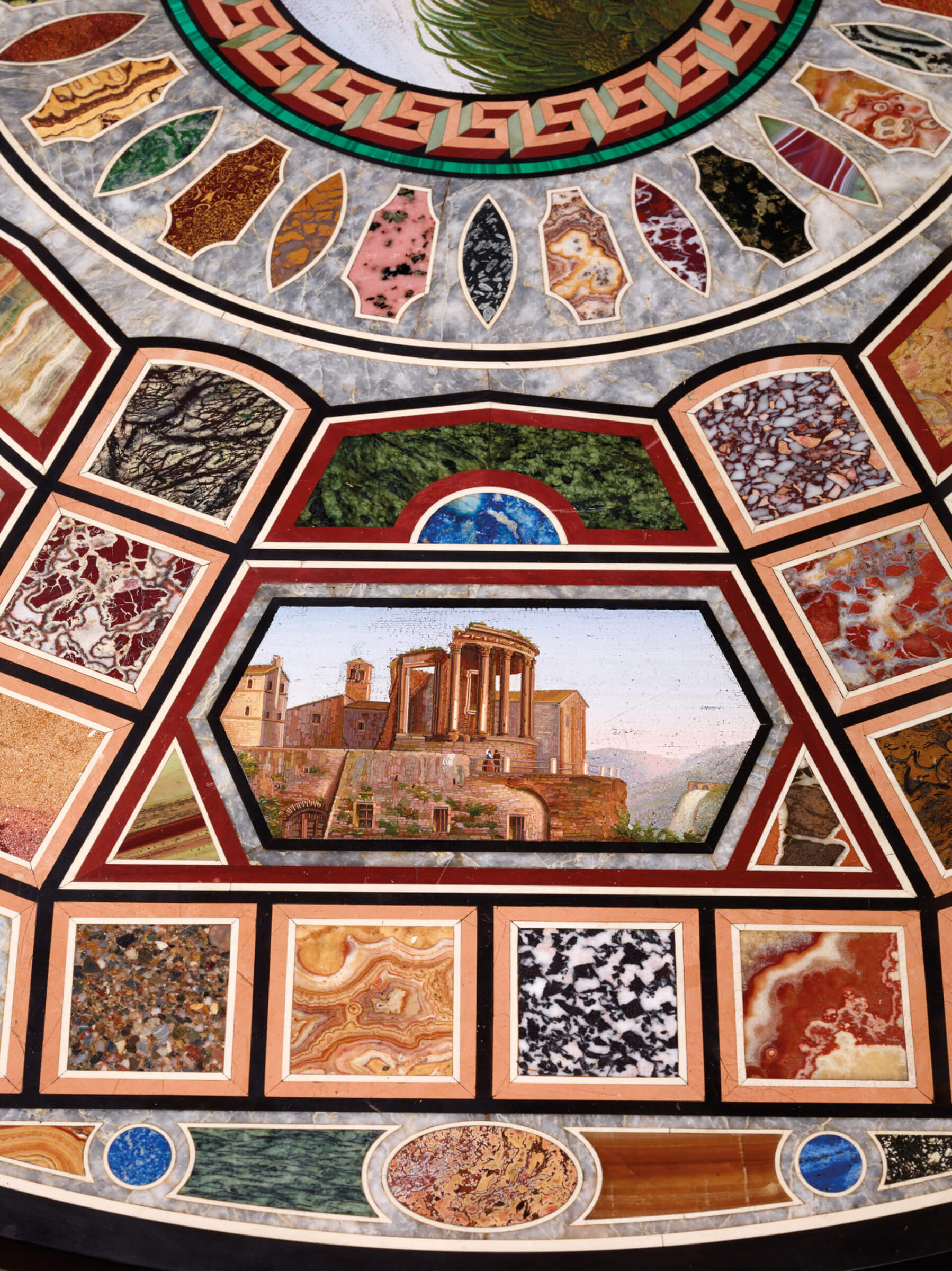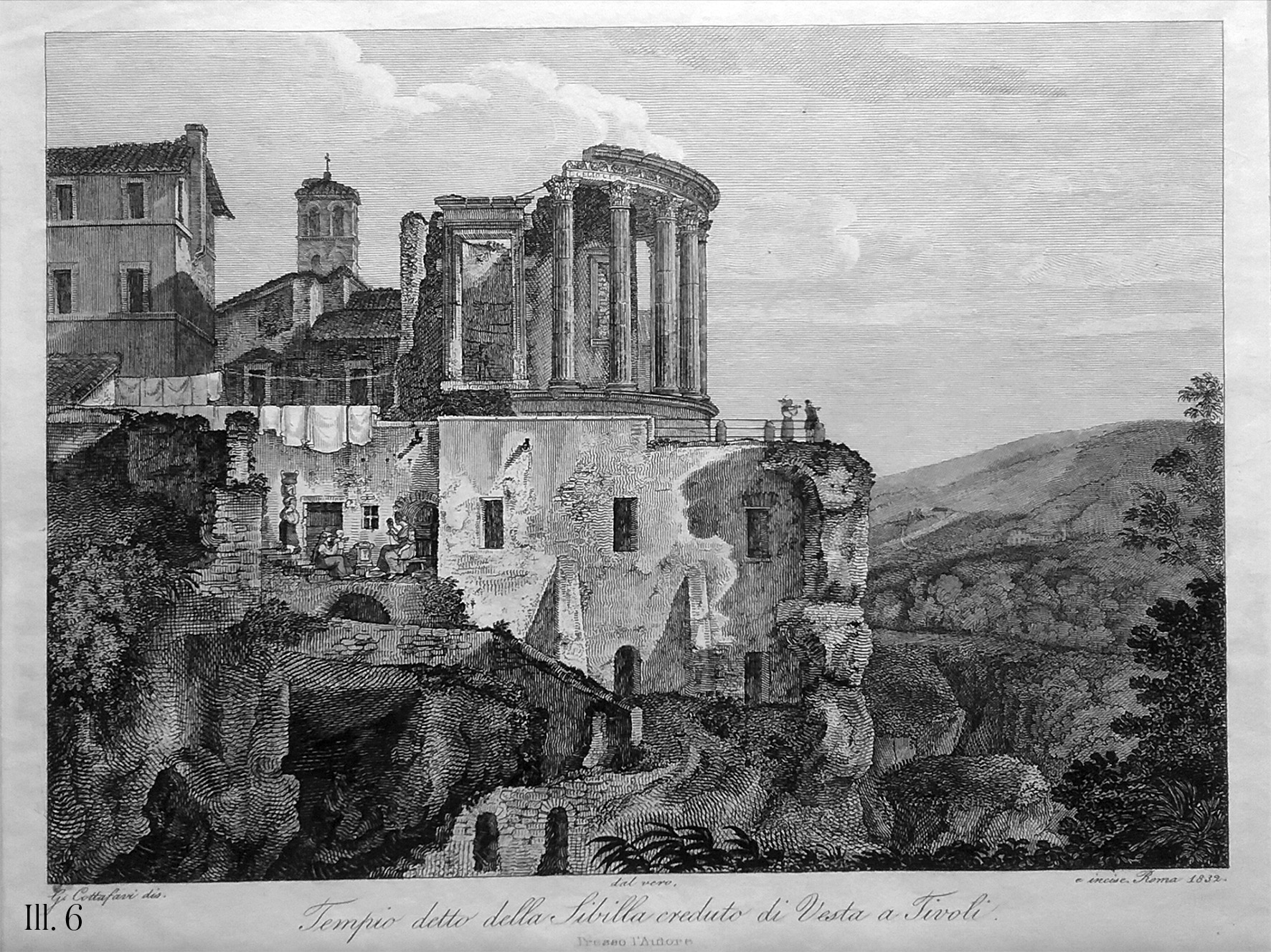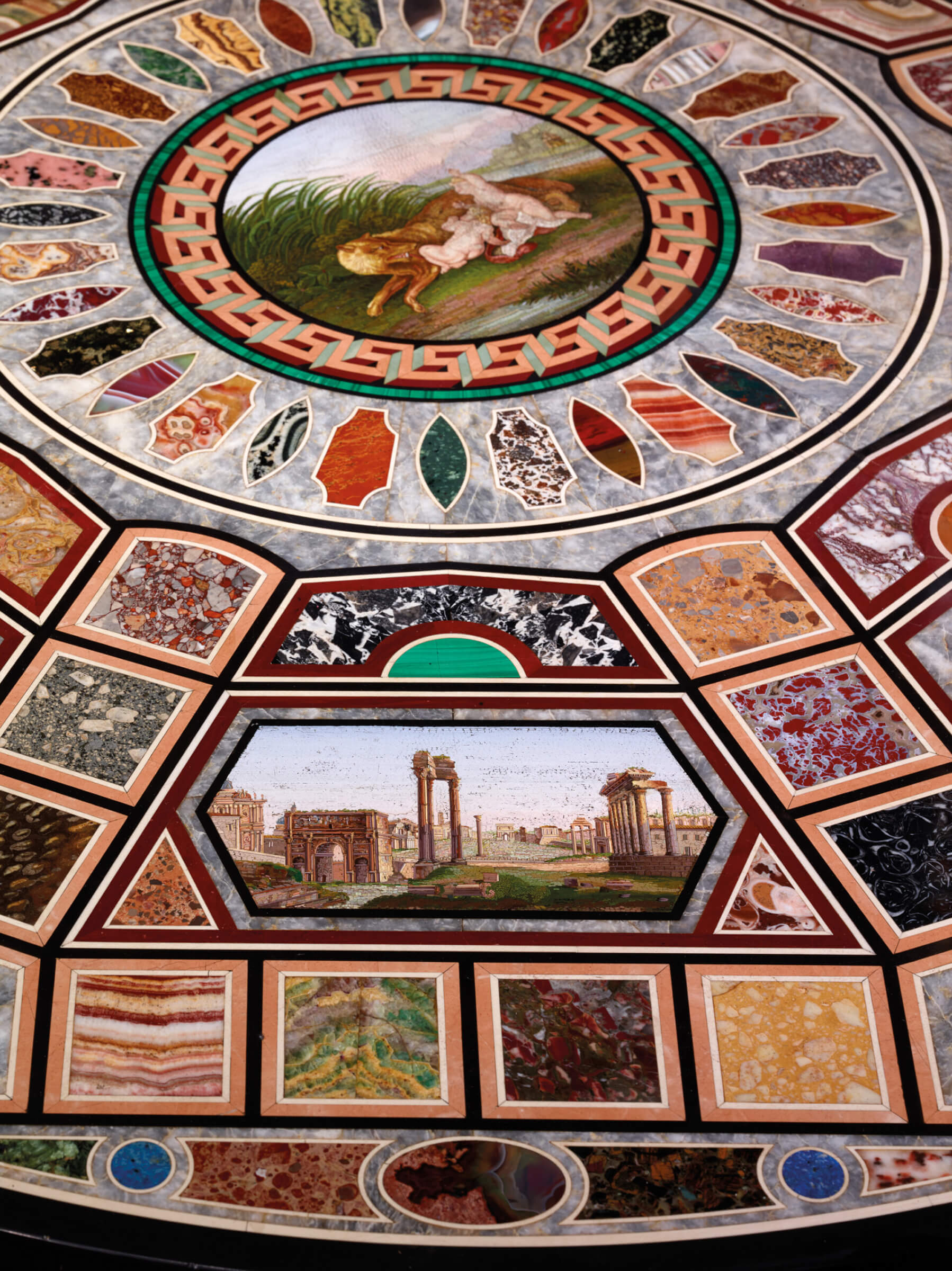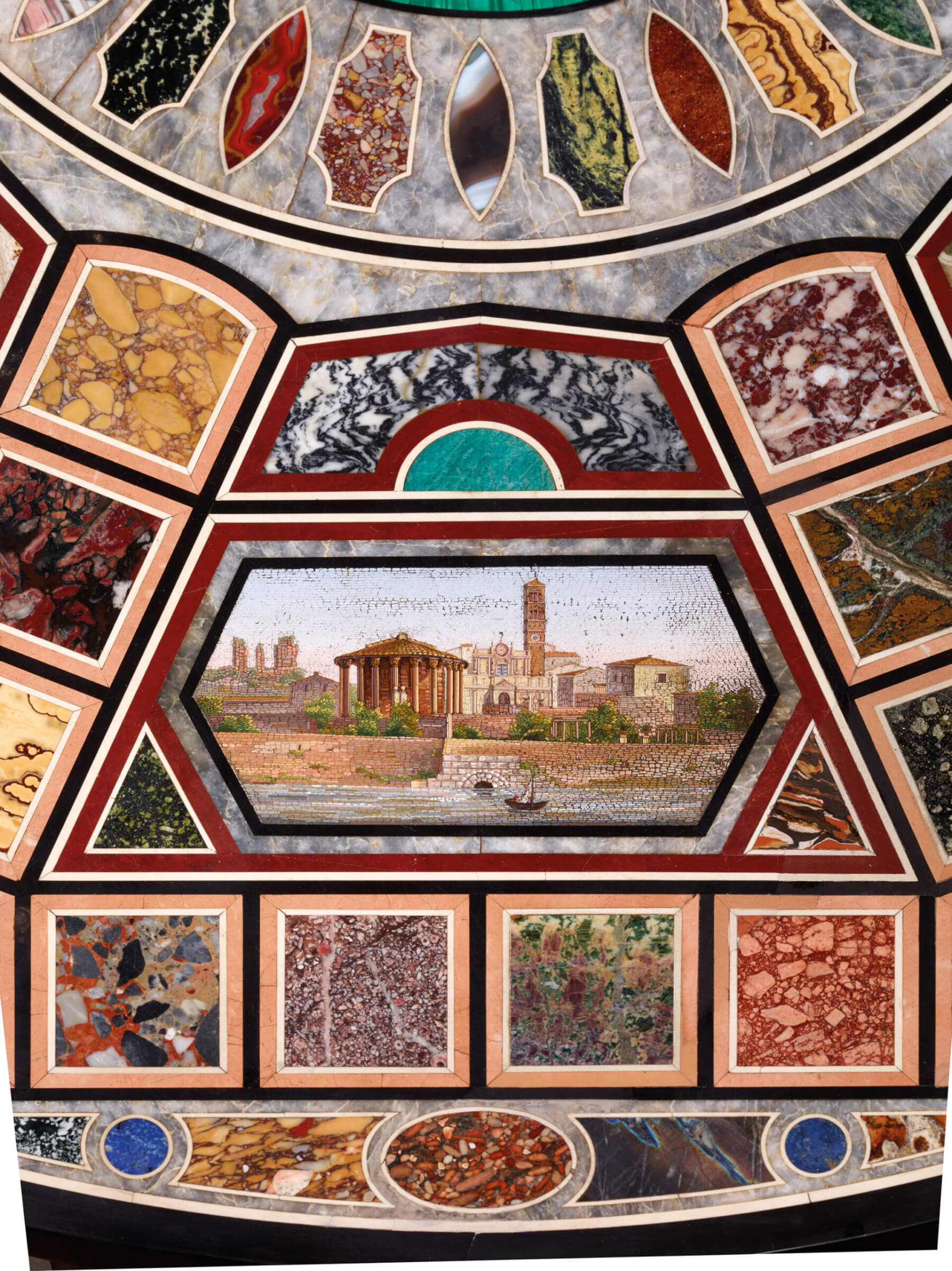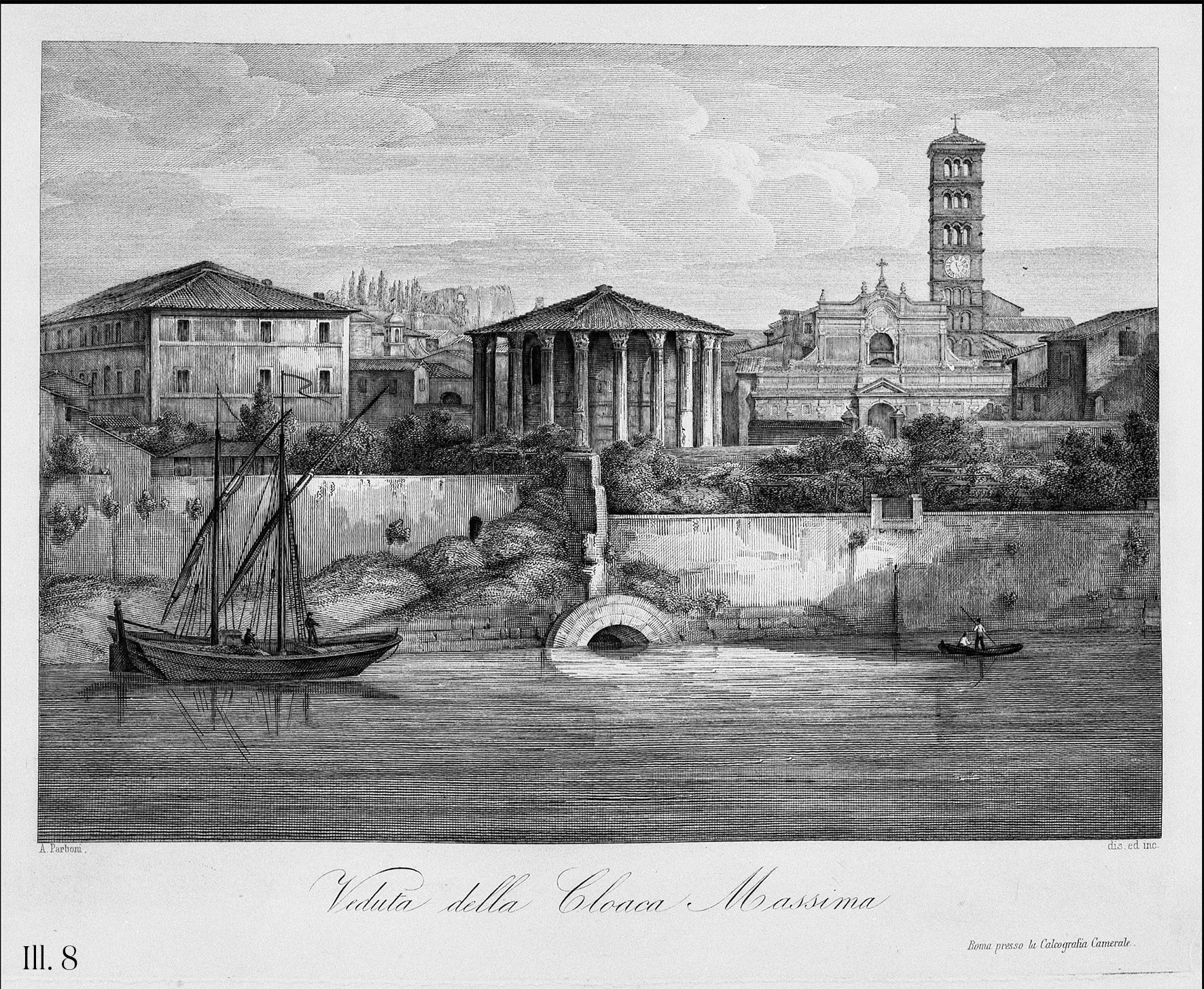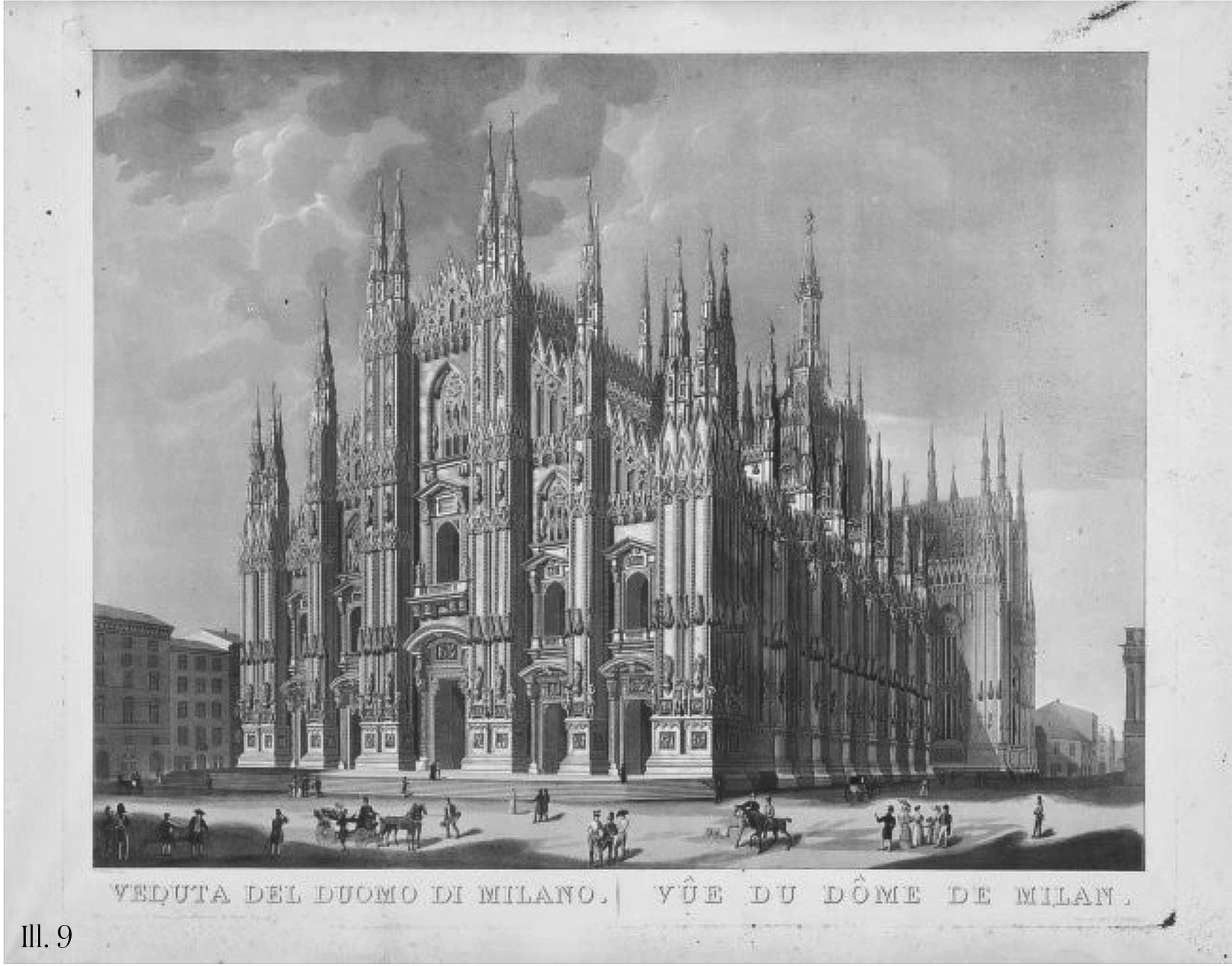

Marquetry of hard stones and micromosaics.
D. of tabletop: 115,2 cm. (45 ¼ in.).
PROVENANCE: acquired in Rome in 1835 by Jean-Baptiste Mellerio (1765-1850), the famous jeweller to Queen Marie-Antoinette, then to the court of Napoleon I, whose family of Lombard origin had settled in France during the reign of Francis I; collection of Jean-Baptiste Mellerio at the Château de la Doutre, in Ozoir-la-Ferrière (Seine-et-Marne); then descendants to the present day.
STATE OF CONSERVATION: This extraordinary tabletop, a very comprehensive collection of jaspers and marbles, was damaged when a chandelier fell at the Château of La Doutre during the war. A campaign of conservative and reversible restoration was carried out in our workshops so as to return this masterpiece to its original state.
TEXT AND STUDIES: Dr Anna Maria Massinelli, Professor of Art History at the Brera Academy of Fine Arts, Milan.
The Mellerio lithotheque constitutes a testament to Caramelli’s fascination for the mineral world. The main core of the samples making up the opulent Mellerio table consists of what are referred to as marmora romana, a term designating materials whose extraction and use date back to the imperial Roman period, when a veritable craze for polychrome marbles emerged and each territory of the empire made its contribution of stone to the Eternal City: Spain, Gaul, Greece, Asia Minor, Egypt, Tripolitania, Numidia, Mauritania, and Italy. The 180 lapidary samples that make up the sophisticated geometry of the table are set against a background of bardiglio nuagato marble, while its different sections are outlined by fine borders in black and white marble and Rosso Antico marble, marmor taenarium, from the promontory of the ancient Cape Tenaro, in Greece.
This lithotheque is an exquisite work of lapidary art, capable of sublimating this poignant reminiscence of Antiquity, which had captivated generations of Grand Tourists, enamoured of the charm of the Eternal City. It also bears witness to a prolific period from the point of view of collectionism and studies, which saw the passion for lithic materials shift from hedonistic aesthetic satisfaction to a scientific discipline in its own right.
Central medallion:
Ill. 1 – The myth of the foundation of Rome. The traditional iconography of this legendary event, characterized by the She-wolf suckling the twins Romulus and Remus, has been the subject of various interpretations over time. Peter Paul Rubens (1577-1640) addressed this theme in a painting produced in Antwerp in 1612 (Rome, Capitoline Museums).
In the four oval panels:
Ill. 2 – View of the Flavian Amphitheatre from the Palatine Hill, seen from the same perspective as Achille Parboni’s print, probably used as a model, but with the difference that in the mosaic we can see the addition of the Arch of Constantine on the right.
Ill. 3 – The mosaicists also had at their disposal an infinite number of pictorial models and engravings with views from different angles for St. Peter’s Square. The prototype that was used here could be a drawing by Giovan Battista Piranesi, engraved by Pietro Ruga and included in the collection of prints published by Nicola de Antoni in 1800, which became one of the most popular views, with the entrance to the square seen from the left, as if one were entering from Borgo Santo Spirito.
Ill. 4 – The oval with the Piazza della Rotonda shows the famous Roman view as it was in the mid-19th century, dominated by the solemn structure of the Pantheon, shown with the two side steeples added to the request of Urban VIII Barberini in the first half of the 17th century and demolished in 1882. Among the countless views, the reference model for this mosaic could be the engraving by Achille Parboni, reproduced several times in volumes presenting views of Rome.
Ill. 5 – The view of the Certosa di Pavia is taken from an engraving contained in the 1831 volume of Francesco Gandini, Viaggio in Italia. It is an unusual subject that does not appear in the iconographic repertoires of Roman mosaics. However, if we consider it in relation to Jean-Baptiste Mellerio, it takes on another value – he clearly wanted to entrust this painting with the memory of his trip to Italy by celebrating not only the Eternal City, but also the most significant places in northern Italy, from which his family originated.
On the hexagonal panels:
Ill. 6 – View of the rocky promontory of the Acropolis of Tivoli on which stands, in the centre, the Temple of Vesta, dating back to the 1st century BC. The view is the same as that which appears in the engraving by Gaetano Cottafavi from 1832, in which, however, as in other contemporary engravings, the Temple of the Sibyl is omitted, while it is added in the mosaic.
Ill. 7 – The sweeping view of the ruins of the Roman Forum, an iconic image celebrating the imperial splendour of yesteryear, is dominated by the three columns of the Temple of Vespasian in the centre, between the Arch of Titus and the Ionic portico of the Temple of Saturn. The southern view of the monumental archaeological complex can be encountered in the vast graphic production of the 19th century, such as the print by the engraver Gaetano Cottafavi.
Ill. 8 – The mosaic depicting the Cloaca Massima and the Tiber’s bank near Tiber Island shows the mouth of the ancient sewer dating from the 7th century BC, surmounted by the Temple of Hercules Victor and the medieval basilica of Santa Maria in Cosmedin, with its 18th– century façade and ancient bell tower. The mosaic draws its inspiration, with some simplifications, from an engraving by Achille Parboni.
Ill. 9 – The cathedral of Milan is the second view of Lombardy included in the cycle of mosaics of the table. The space around the cathedral was still narrow, however, because the old civil buildings surrounding it obstructed the view from the front, so that the views from the early 19th century are more commonly taken from the right-hand side, as in this mosaic taken from the engraving by Carolina Lose in 1816.

